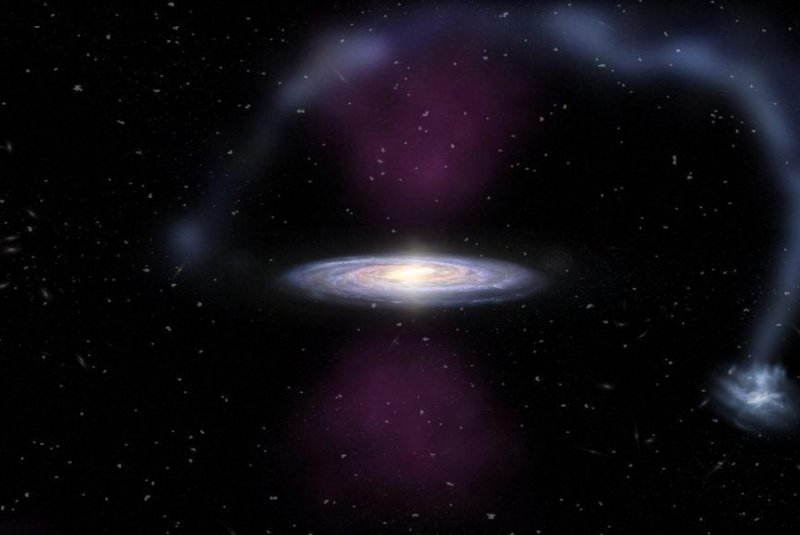A massive explosion emanated from the center of the Milky Way just 3.5 million years ago. Photo by James Josephides/ASTRO 3D
Oct. 7 (UPI) -- Some 3.5 million years ago, a sudden blast of energy rippled across the Milky Way. The cone-shaped burst of radiation sprang from the supermassive black hole at the center of the galaxy.
Astronomers described the phenomenon for the first time this week in the Astrophysical Journal.
The so-called Seyfert flare produce two "ionization cones," which expanded as they radiated across the Milky Way.
The blast was so powerful that it even altered the Magellanic Stream, a trail of gas that stretches for 200,000 light-years from a pair of neighboring dwarf galaxies, the Large and Small Magellanic Clouds, to the outer edge of the Milky Way.
"The flare must have been a bit like a lighthouse beam," Joss Bland-Hawthorn, a professor at the University of Sydney in Australia, said in a news release. "Imagine darkness, and then someone switches on a lighthouse beacon for a brief period of time."
Astronomers analyzed the effects of the powerful flare using images captures by the Hubble Space Telescope. The research team determined the explosion happened roughly 3.5 million years ago -- the equivalent of last week, in cosmic time.
"This is a dramatic event that happened a few million years ago in the Milky Way's history," said Lisa Kewley, director of Australia's ARC Center of Excellence for All Sky Astrophysics in 3 Dimensions. "A massive blast of energy and radiation came right out of the galactic center and into the surrounding material. This shows that the center of the Milky Way is a much more dynamic place than we had previously thought. It is lucky we're not residing there!"
The energy emitted by the Milky Way's supermassive black hole, Sagittarius A, rippled across the galaxy for just 300,000 years, a relatively brief period of time.
Scientists suggest the blast was so power-packed with energy, only nuclear activity inside Sagittarius A could have triggered it. The research suggests the Milky Way's center is much more dynamic place than scientists thought.
"These results dramatically change our understanding of the Milky Way," said study co-author Magda Guglielmo from the University of Sydney. "We always thought about our Galaxy as an inactive galaxy, with a not so bright center. These new results instead open the possibility of a complete reinterpretation of its evolution and nature."
In followup studies, scientists plan to detail some of the impacts of the flare on the Milky Way's gas, dust and stars.















